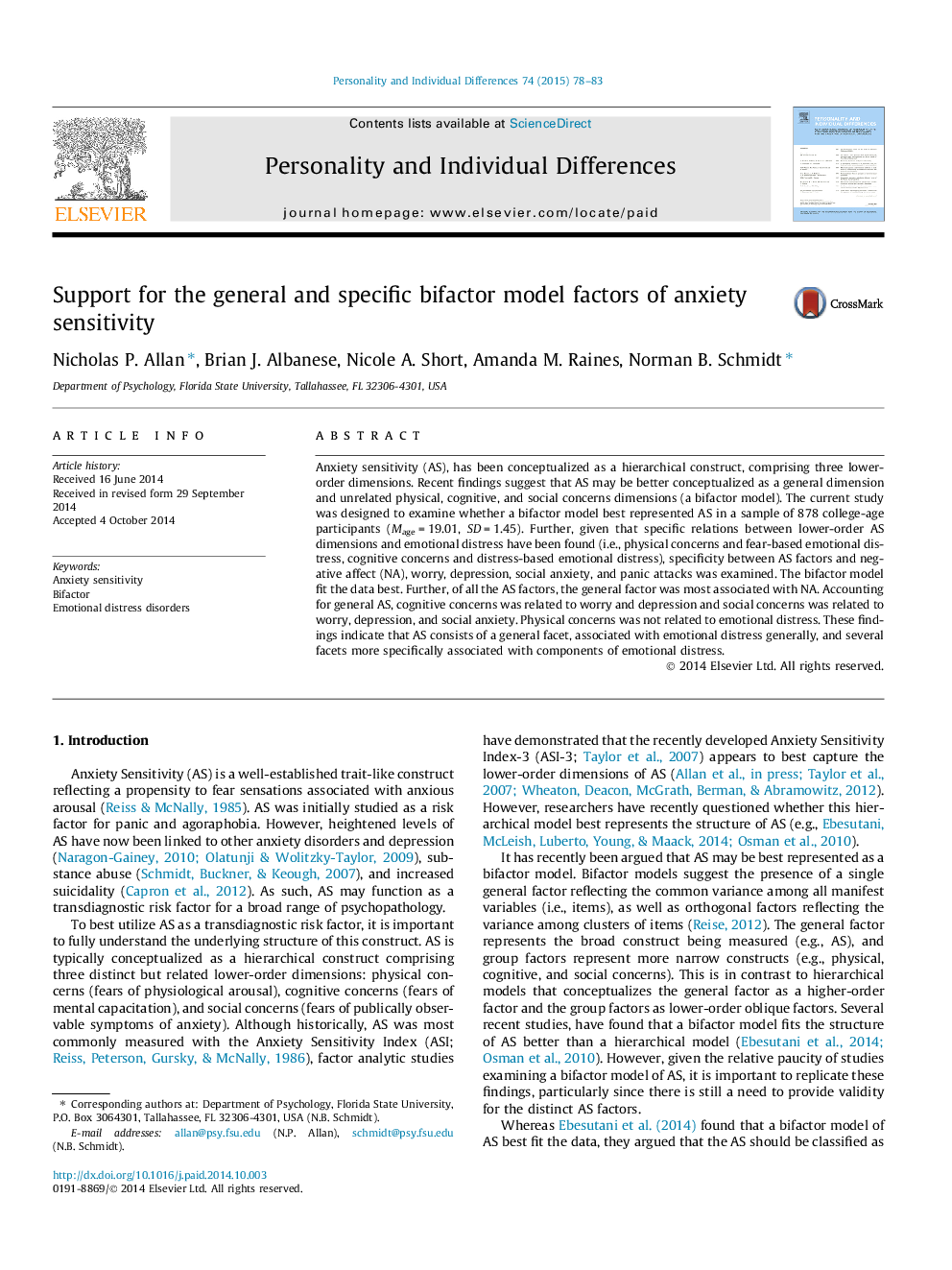| Article ID | Journal | Published Year | Pages | File Type |
|---|---|---|---|---|
| 7251890 | Personality and Individual Differences | 2015 | 6 Pages |
Abstract
Anxiety sensitivity (AS), has been conceptualized as a hierarchical construct, comprising three lower-order dimensions. Recent findings suggest that AS may be better conceptualized as a general dimension and unrelated physical, cognitive, and social concerns dimensions (a bifactor model). The current study was designed to examine whether a bifactor model best represented AS in a sample of 878 college-age participants (Mage = 19.01, SD = 1.45). Further, given that specific relations between lower-order AS dimensions and emotional distress have been found (i.e., physical concerns and fear-based emotional distress, cognitive concerns and distress-based emotional distress), specificity between AS factors and negative affect (NA), worry, depression, social anxiety, and panic attacks was examined. The bifactor model fit the data best. Further, of all the AS factors, the general factor was most associated with NA. Accounting for general AS, cognitive concerns was related to worry and depression and social concerns was related to worry, depression, and social anxiety. Physical concerns was not related to emotional distress. These findings indicate that AS consists of a general facet, associated with emotional distress generally, and several facets more specifically associated with components of emotional distress.
Keywords
Related Topics
Life Sciences
Neuroscience
Behavioral Neuroscience
Authors
Nicholas P. Allan, Brian J. Albanese, Nicole A. Short, Amanda M. Raines, Norman B. Schmidt,
